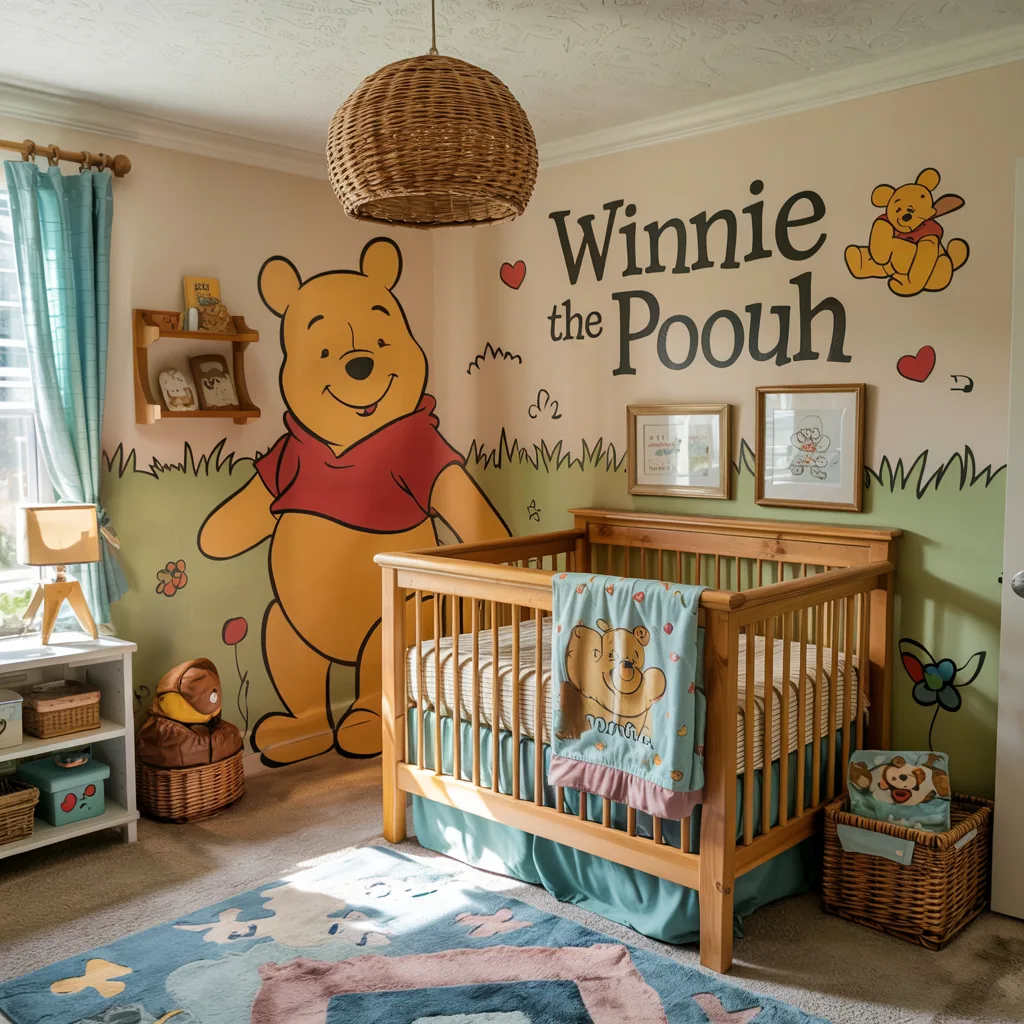As a new parent, you might have seen your baby sleeps with his hands behind his head. This is a cute and common way for infants to sleep. It shows they are comfortable and developing well.
Babies have their own ways of sleeping, like the “hands-up” or “arms behind the head” position. This is due to their natural reflexes. It means your baby is feeling relaxed and improving their motor skills.
Key Takeaways
- The “hands-up” sleeping position is linked to deeper, more restful sleep cycles.
- Newborns have involuntary reflexes, like the startle reflex, that can cause them to bring their hands behind or above their heads.
- The “arms up” sleep position, also known as the “Starfish” position, is part of the recommended back-sleeping position to reduce the risk of SIDS.
- Babies may use their hands for self-soothing by touching their faces or sucking on their fingers during sleep.
- Each baby is unique, and it’s important for parents to prioritize safe sleeping practices and consult with pediatricians if concerned about their baby’s sleep habits.
Table of Contents
Understanding the Sleeping Position
As your little one drifts off to dreamland, you may have noticed that babies often sleep in unique and adorable poses. From the classic back-sleeping position to the endearing starfish pose, each sleeping posture offers insights into your baby’s development and personality.
Why Do Babies Sleep Differently?
Babies’ sleeping positions are influenced by their stage of development and certain reflexes. In the early months, toddler sleeping posture is often guided by reflexes like the startle reflex and tonic neck reflex. These reflexes help baby develop muscle control and coordination, leading to the unique cute baby poses you see.
Common Sleeping Positions for Infants
- Back Sleeping: The recommended safe sleep position to reduce the risk of SIDS.
- Starfish Position: A variation of back sleeping where the baby sleeps on their back with arms lifted upwards.
- Side Sleeping: A common position that allows for easy breathing and reduced risk of SIDS.
Understanding these baby sleep positions can provide valuable insights into your little one’s development and well-being. By being mindful of your baby’s sleeping habits, you can help ensure a safe and restful environment for their growth and development.

Benefits of Sleeping with Hands Behind the Head
As a new parent, you might have seen your baby sleep in unique ways. One common pose is with their hands behind their head. This sleeping style can offer many benefits for your baby’s comfort and sleep quality.
Promotes Comfort and Relaxation
Sleeping with hands behind the head is like being swaddled. It makes babies feel safe and calm. This pose helps your baby relax when they’re too excited or upset. It’s like they’re back in the womb.
This position can help your baby sleep longer and more peacefully. It lets them find a cozy spot on their own.
Encourages a Natural Sleep Pattern
The hands-behind-the-head pose might help your baby sleep better naturally. It’s similar to the fetal position they knew in the womb. This can make it easier for them to adjust to life outside.
It might also lead to better newborn sleeping patterns and a more comfortable baby sleep routine.
| Sleeping Position | Benefits |
|---|---|
| Hands behind the head |
|

“Allowing your baby to sleep in a comfortable position that feels natural to them can help support their overall baby bedtime routine and lead to better-quality sleep.”
Understanding the benefits of the hands-behind-the-head sleeping position can help. It can make a comfortable baby sleep environment. This supports your baby’s natural sleep patterns and promotes their well-being.
Developmental Indicators to Consider
When your baby starts sleeping in new ways, like with their hands behind their head, it shows they’re growing. This special sleeping style might mean they’re hitting big developmental marks. So, it’s a good idea to keep an eye on it.
Has Your Baby Reached Key Milestones?
In the first six months, babies need to eat often, day and night, to grow. They usually don’t sleep through the night or settle down by themselves until they’re ready. Watching your baby’s sleep and growth can tell you a lot about their journey.
Observing Motor Skills Progression
- As your baby’s motor skills get better, they might try out new sleeping ways, like hands-behind-the-head.
- This could mean they’re getting better at controlling their body, showing they’re developing well.
- Look out for other big steps, like rolling over, as they might happen around the same time as new sleep habits.
Every baby is different, so if you’re worried about your child’s sleep or growth, talk to your pediatrician. They can help make sure your baby is doing great.

Safety Considerations for Baby Sleep
Keeping your baby safe while they sleep is very important. Following safe sleep rules can lower the chance of Sudden Infant Death Syndrome (SIDS) and other accidents. A cozy and safe sleep spot helps your newborn sleep well and peacefully.
The Importance of Safe Sleep Practices
Putting your baby on their back to sleep is safest. It keeps their airway open and lowers SIDS risk. Also, use a firm, flat mattress without loose bedding, pillows, or soft toys that could be dangerous.
How to Create a Safe Sleep Environment
- Keep the room temperature between 68-72°F (20-22°C).
- Use a firm mattress with a tight-fitting sheet and avoid soft objects in the crib.
- Consider using a sleep sack instead of loose blankets to keep your baby warm and secure.
- Ensure the sleep area is free from any potential strangulation or suffocation risks.
- Avoid co-sleeping if you are overly tired, sick, or have consumed alcohol or drugs.
By following these safe sleep practices, you can make a cozy and safe spot for your newborn sleeping patterns. This promotes comfortable baby sleep.

“Placing babies on their backs to sleep is the single most effective strategy for reducing the risk of SIDS.”
Keeping your home smoke-free and encouraging breastfeeding also helps. A well-rested and safe baby is a happy baby.
When to Be Concerned About Sleep Positions
As your baby grows, watching their sleep habits is key. Look out for any odd sleep positions or movements. These might show distress or developmental issues. While hands-behind-the-head sleep is normal, some signs need attention.
Recognizing Signs of Distress
Watch for your baby’s hands moving a lot, or them sleeping in odd ways. These signs might mean there’s a problem. It’s best to check with your pediatrician.
Consulting with Your Pediatrician
If you’re worried about your baby’s sleep, talk to your pediatrician. They can check things out and give advice. Your pediatrician’s help is crucial for your baby’s sleep development and infant sleep habits.
| Potential Concerns | Recommended Action |
|---|---|
| Excessive hand movements during sleep | Consult your pediatrician |
| Abnormal or restricted positioning | Consult your pediatrician |
| Unusual sleep patterns or behaviors | Consult your pediatrician |
Being alert and talking to your child’s doctor is important. It helps keep your baby’s bedtime routine and sleep healthy.
The Role of Environment in Sleep Habits
Creating a cozy and calm sleep area is key for your baby’s sleep. The sleep space greatly affects baby sleep positions, comfortable baby sleep, and healthy newborn sleeping patterns.
Creating a Calming Sleep Space
To make a soothing sleep area, keep the room dark, quiet, and comfy. Use blackout curtains or a sleep mask to block out light. Soft background noise, like a white noise machine or a low fan, can also help.
Effects of Noise and Light
Studies show that preterm babies in a cycled light room leave the NICU sooner and start feeding sooner. Also, short-term sleep loss in healthy babies can cause more breathing issues and lower pain tolerance.
Listen to your baby’s likes and adjust the sleep area as needed. A calm and soothing space can improve baby sleep positions, comfortable baby sleep, and healthy newborn sleeping patterns.
“Consistency and patience are key in addressing and modifying sleep behaviors related to hitting or pushing.”
Every baby is different, so what works for one might not work for another. Try different methods and see how your baby reacts. Find the perfect sleep environment that makes them feel safe, comfy, and well-rested.
Tips for Ensuring Better Sleep for Your Baby
As a new parent, making sure your baby sleeps well is key for their health and growth. A regular bedtime routine and understanding the value of daytime naps can help. This way, your baby can sleep more comfortably and soundly.
Establishing a Consistent Sleep Routine
Starting a calming bedtime routine helps your baby know it’s time to sleep. This could be a warm bath, a gentle massage, or a soothing story. It’s important to stick to the same steps every night. This helps your baby learn to associate these actions with sleep.
The Importance of Daytime Naps
Daytime naps are crucial for better nighttime sleep. Watch for signs like yawning or rubbing their eyes. Make sure the nap area is quiet and dark. Also, keep the sleep schedule consistent to match your baby’s natural rhythm.
By following these tips and making a cozy sleep space, your baby will get the rest they need. Every baby is different, so be flexible and adjust to their unique sleep needs.
| Newborn Sleep Statistics | Amount of Sleep |
|---|---|
| Newborns (0-3 months) | 16-18 hours per day |
| 3-month-olds | 14-15 hours per day |
| 6-month-olds | 13-14 hours per day |
| 9-12 months | 8 uninterrupted hours at night |
“Sleeping on the back keeps the windpipe and food pipe open, and sleeping on a firm, flat surface keeps the baby’s airway clear and open.”
Comparing Sleep Positions: Pros and Cons
As your little one grows, they might try different sleep positions. Back sleeping is safest to lower SIDS risk. But, other positions like hands-behind-head can also be comforting and help with growth.
Back Sleeping vs. Hands Behind Head
Back sleeping is the safest for babies, lowering SIDS risk. But, some find hands-behind-head soothing. This position might help them sleep better and move more freely at night.
As babies grow, they might start sleeping on their sides. Side sleeping can be safe, but always start with back sleeping for their safety.
Exploring Other Comfortable Positions
There are other positions that might comfort your baby. Side sleeping is cozy, but only when they can roll over.
Watch your baby’s sleep habits and what they like. Knowing the good and bad of each position helps them sleep well.
| Sleep Position | Pros | Cons |
|---|---|---|
| Back Sleeping |
|
|
| Hands Behind Head |
|
|
| Side Sleeping |
|
|
“Remember, the safest sleep position for your baby is on their back. This reduces the risk of SIDS and helps ensure a peaceful, restorative night’s sleep.”
Resources for New Parents on Baby Sleep
Understanding baby sleep can be tough, but there’s help out there. You can find lots of resources to guide you. From books to online sites, there’s a lot of info to support your baby’s sleep.
Books and Guides on Infant Sleep
Books like “Healthy Sleep Habits, Happy Child” by Marc Weissbluth and “The Happiest Baby on the Block” by Harvey Karp are great. They give deep insights into baby sleep and how to improve it. These books can help you understand your baby’s sleep needs and create a good bedtime routine.
Reliable Online Platforms for Sleep Tips
The American Academy of Pediatrics website and the Baby Sleep Site are top online resources. They offer lots of info and tips on baby sleep. You can learn about creating a calm sleep space and solving sleep problems. Also, try baby tracking apps like Baby Connect to keep an eye on your baby’s sleep and growth. This can help spot any issues and get advice from your pediatrician.
FAQ
What is the significance of a baby sleeping with their hands behind their head?
Babies often sleep in unique ways, like putting their hands behind their head. This is normal and shows they are growing. It’s linked to reflexes, motor skills, and how they find comfort and calm.
Why do babies sleep differently?
Babies sleep in various ways because of reflexes like the startle reflex. These reflexes help them control their muscles and move better. They might sleep on their back, side, or even in a “starfish” position with arms up.
What are the benefits of sleeping with hands behind the head?
Sleeping with hands behind the head can make babies feel safe and secure, like being swaddled. It helps them relax when they’re too excited or upset. It also feels like being back in the womb, helping them adjust to the outside world.
How can the hands-behind-head position indicate developmental progress?
This sleeping position shows babies are getting better at moving and understanding their body. Look for signs like rolling over and being more aware of their surroundings. It might happen during growth spurts or when they learn new skills.
What are the safety considerations for baby sleep?
Keeping babies safe while they sleep is very important. Always put them on their back on a firm, flat surface. Make sure there’s no loose bedding, pillows, or toys. Keep the room at a comfortable temperature and use a firm mattress with fitted sheets.
When should parents be concerned about sleep positions?
The hands-behind-head position is usually okay, but watch for signs of trouble. Look for too much hand movement, odd positions, or if they can’t move easily. If you see anything strange, talk to your pediatrician.
How can parents create a conducive sleep environment for their baby?
A good sleep space is key for your baby’s sleep. Make the room dark, quiet, and just right for sleep. Use blackout curtains and soft sounds to help them sleep better.
What are some tips for establishing a better sleep routine for your baby?
A regular bedtime routine helps your baby know it’s time to sleep. It can include a warm bath, massage, or a story. Daytime naps are also important for better sleep at night. Try to avoid too much excitement before bedtime.
How do different sleep positions compare in terms of benefits and risks?
Back sleeping is safest to lower SIDS risk. Hands-behind-head sleeping can be comforting and help with self-soothing. Other positions, like side sleeping, may come as babies grow. Each position has its own benefits and risks, and babies may try different ones as they develop.
Where can parents find reliable resources on baby sleep?
There are many trusted sources for baby sleep advice, like books, websites, and apps. Good books include “Healthy Sleep Habits, Happy Child” and “The Happiest Baby on the Block.” The American Academy of Pediatrics website and the Baby Sleep Site are also great online resources.











